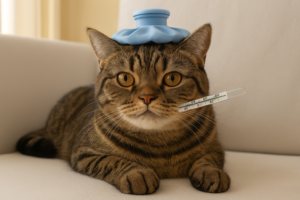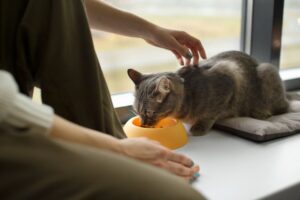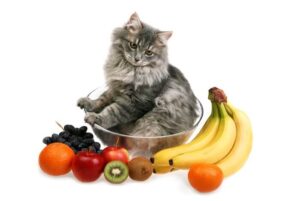Your cat begging for food from your plate might seem harmless—or even cute—but feeding the wrong thing could put their life at risk. Many foods cats can’t eat are common in human meals and can cause severe health issues, from vomiting and diarrhea to liver failure or even death.
If you’re a responsible cat owner who wants to protect your pet, understanding which foods are toxic to cats is essential. In this article, we list 10 foods your cat should never eat, explain why they are harmful, and offer practical tips to keep your feline safe at home.
Why Are Some Foods Dangerous for Cats?
Cats have a unique digestive system. As obligate carnivores, their bodies are designed to process animal protein—not the variety of ingredients found in human meals. Some foods contain substances that cats can’t metabolize properly, leading to toxicity, organ damage, or digestive issues.
Even healthy foods for humans, like grapes or dairy, can be dangerous for cats. A single bite of the wrong item could trigger a serious reaction in a sensitive feline.
Top 10 Foods Cats Should Never Eat
Below are the most common foods that should be kept far away from your cat’s bowl. Even small amounts can be risky.
| Food | Why It’s Dangerous |
|---|---|
| Chocolate | Contains theobromine and caffeine, both toxic to cats. May cause seizures, tremors, or death. |
| Onions and Garlic | Can damage red blood cells and lead to anemia, even in small quantities. |
| Grapes and Raisins | Known to cause acute kidney failure in cats, even just a few can be fatal. |
| Milk and Dairy | Most adult cats are lactose intolerant and can suffer from diarrhea and upset stomach. |
| Alcohol | Affects the liver and brain quickly. Even a few drops can be deadly. |
| Cooked Bones | Can splinter, causing internal cuts or choking hazards. |
| Coffee | Contains caffeine, which can lead to heart palpitations and nervous system issues. |
| Raw Dough with Yeast | Ferments in the stomach, producing gas and alcohol, which can lead to bloating and toxicity. |
| Raw or Spoiled Meat | May carry bacteria like Salmonella or E. coli, leading to food poisoning. |
| Foods with Xylitol | This artificial sweetener can cause insulin spikes, hypoglycemia, and liver failure. |
Watch This: What Cats Should Never Eat
This short video outlines the key foods that are harmful to cats and offers quick tips on how to respond if your pet ingests something dangerous. A must-watch for all cat parents.
What to Do If Your Cat Eats Something Toxic
If your cat eats something from this list, don’t wait for symptoms to appear—call your vet or an emergency animal clinic immediately. Do not attempt home remedies or induce vomiting unless specifically instructed by a vet. The faster you act, the better your cat’s chances of recovery.
Common Symptoms of Food Poisoning in Cats
- Vomiting or diarrhea
- Lethargy or weakness
- Excessive drooling
- Seizures or tremors
- Breathing difficulty
Track what your cat ate, how much, and when. This information can help the veterinarian make faster and more effective treatment decisions.
How to Prevent Accidents: Simple Everyday Habits
Protecting your cat doesn’t require drastic changes, just consistent care. Here are a few preventive measures:
- Keep human food out of reach—don’t leave food unattended on counters or tables.
- Don’t feed leftovers, no matter how much your cat begs.
- Educate family members and guests about what not to give your cat.
- Use pet-safe treats only, available at pet stores or from your vet.
- Keep trash cans secure to prevent scavenging.
Safe and Healthy Alternatives for Your Cat
If you enjoy treating your cat to something extra, try offering these vet-approved options instead:
- Cooked chicken (plain, no seasoning)
- Steamed fish (boneless and unseasoned)
- Boiled egg in small amounts
- Pumpkin (great for digestion)
- Commercial cat treats made with natural ingredients
Always introduce new foods slowly and in small portions. And when in doubt, ask your vet!
Being Informed Is the Best Protection
Avoiding foods cats can’t eat is one of the simplest yet most important ways to protect your pet. With the right knowledge, a bit of planning, and daily attentiveness, you can keep your feline friend safe from food-related emergencies.
Remember: what’s safe for you might be toxic to your cat. Stick to cat-approved diets, monitor treats, and seek vet guidance whenever you have questions.
👉 Also read: Best Food Options for Cats with Allergies
Did you find this helpful? Share it with other cat lovers and check out more of our articles on cat health, nutrition, and home safety tips. Your cat depends on you—let’s give them the care they deserve.



